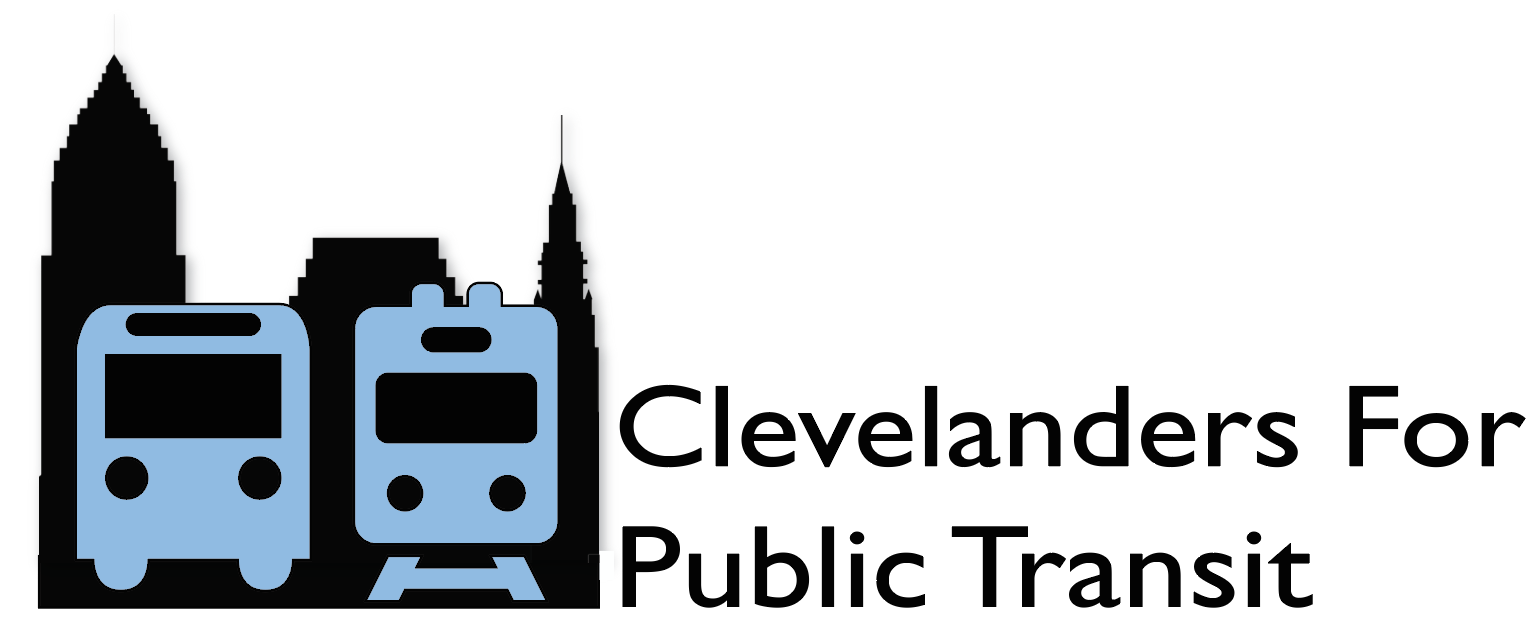The Case for Local Investment in Public Transportation
Summary: Northeast Ohio is losing population, that not only leads to massive loses in tax revenue to GCRTA, but sprawl is also harder to serve with good transit.
Press coverage:
- Cuyahoga County putting a renewed focus on public transit
Clevelanders for Public Transit played a large part in the formation of a county public transit committee.
- Creating a multi-county public transit system in Northeast Ohio
Clevelanders for Public Transit agrees a multi-county system is essential to grow public transit in our region.
Background
A little bit of history is needed to understand how public transportation is severely underfunded in Cleveland.
When GCRTA was formed in 1975 it included dedicating funding from a 1 percent sales tax within Cuyahoga County. This county sales tax accounts for about 80% of RTA’s budget. At that time no one knew that Cuyahoga’s population had peaked in the 1970’s and would continue to decline.

Population has continued to decline in Cleveland and Cuyahoga County since the 1970s.
Source: RTA
As shown above, since 1970 Cuyahoga County has lost over 25% of its population while Cleveland has lost over 47%! Northeast Ohio’s top priority has to be attracting residents and preventing sprawl out of Cuyahoga County.
Preventing sprawl allows for more efficient transit service. The more residences and businesses on one bus line the more frequent RTA can run buses on those lines instead of having to serve sprawling areas. This increased frequency leads to increased convenience and use of transit which leads to even more frequent service. You see what were getting at?
Besides more efficient service, we need to stop population loss in Cuyahoga County because it is leading to massive losses in tax revenue, including GCRTA.

Though revenue from the one cent RTA tax is increasing, it is still losing nearly $68 million annually due to sprawl.
Source: RTA
Due to these changes, Clevelanders for Public Transit recommends that GCRTA needs to think beyond Cuyahoga County but as a multi-county, regional transit agency such as SEPTA in Philadelphia.
We know that 80% of RTA’s budget comes from the one cent county sales tax, now we need to look at expanding the tax and service to other counties. According to All Aboard Ohio, more than one-third of all passengers on GCRTA’s suburban park-n-ride bus services come from outside Cuyahoga County. In the short-term GCRTA should consider charging more for these costly services. In the long-term we should evaluate expanding the system (and the sales tax) outside of Cuyahoga County.
We must start thinking bigger locally — on our own — to expand the system and revenue sources to prevent further fare increases and cuts in service in the near future.
Of course, sprawl outside the county also makes it more costly for RTA to serve less dense employers and institutions. Many institutions are not even considering public transit when selecting their location, later asking RTA to add additional service it can’t afford to provide. Again, this presents a huge problem for GCRTA’s current hub and spoke system. As this recent Crain’s editorial has pointed out, transit is essential for our economy. Within the current network only 1 out of 4 available jobs is within a 90-minute transit trip.
Furthermore, the share of jobs within downtown Cleveland has fallen from 17.5 percent to 15.4 percent 2000-2010. Furthermore, since only about 15% of jobs are located downtown, it comes as no surprise that 85% of Northeast Ohio is stuck driving despite interest in transit and biking. To increase ridership we need a transit system that takes people where they need to go.
We recommend the county enact policies to prevent sprawl and look forward to working together in the near future.
